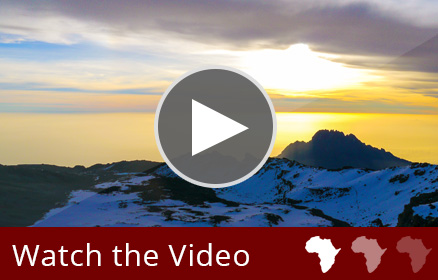Preparing for your Kilimanjaro climb
Preparation and planning is key to make a success of your Kilimanjaro trip. For most, it is a once in a lifetime exercise, so doing a little research will make it worth your while.
Which route to take?
This is often a difficult choice but it can be easily narrowed down according to your preferences. Find out more about route options or contact us and we will gladly advise you.
Here is a quick overview
You want to get to the top in the easiest possible way? Choose Marangu or Rongai.
If you want beautiful nature and views, go via Machame, Lemosho or Rongai .
Shira is beautiful but can be tough. The most intense route is Umbwe.
Marangu is the busiest route while on Rongai there are very few people and it is usually the driest route.
How many days should you allow for your climb?
The shortest route is Umbwe (5 days) but recommended only for hikers that are very fit and well acclimatised to height. Marangu can take 5 days, but 6 days is recommended for better acclimatisation. Kilimanjaro-Experience offers only the 6-day Marangu trip option.
If you have enough time, rather take a day extra to ensure you adjust to the altitude. Your chances of reaching the summit might increase.
Fitness
A key question many potential Kilimanjaro climbers ask themselves is, “how fit do I need to be?” The answer to the question might surprise you! Read through our guide on physical preparation for Kilimanjaro to increase your chances of reaching the summit.
Gear and clothing
What you wear and the equipment you take with you are very important considerations before embarking on your climb. We have put together an essential gear and clothing list as well as an informative video that will guide your through the packing process and ensure you arrive ready for action.
Health
While we generally advise that our climbers should be in good health before attempting to climb Kilimanjaro, a number of factors can affect your climb. The main health risk facing climbers is altitude sickness. Take a look at the most common health problems experienced by climbers and what to do about them in our informative health section.
When to go?
Kilimanjaro can be climbed at any time of the year but certain months are generally considered more favourable. The mountain is close to the equator which means that seasonal temperatures do not vary greatly. The driest months are January to February and July to September. In certain months the mountain is extremely busy and during full moon things can get crowded at the top. Find out more about how to pick the perfect time to climb the mountain.
Visa information
Find out what you need to know about obtaining a visa when visiting Tanzania. Climbers of most countries nationalities need to obtain a valid tourist visa to embark on the climb.
How to get there
If you choose to travel overland to Kilimanjaro, you can enter Tanzania from most of its neighbouring countries. Most climbers choose to fly into Tanzania or Kenya (via Nairobi). Use any of the three international airports in Tanzania – Dar es Salaam, Zanzibar or Kilimanjaro International Airport, the latter being the most convenient. Make sure your passport, visa and immunisations are in order.






















